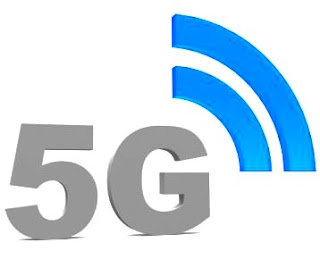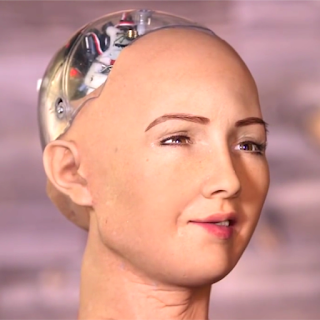With
Superfast 4G mobile data service both coverage and speed
capabilities, we all wonder, what more 5G would do?? 5G is one of the
most discussed technologies in this decade ,but do we really need
it?? Yes, is my answer as I believe it’s the foundation for the next
technological revolution. .. Let’s have a close look of what
actually 5G is...
 |
| 5G Revolution Coming Soon |
When
we check the history of mobile communication: 1G was analog cellular
which brought mobility to analog voice services, 2G technologies,
such as CDMA, GSM, and TDMA, were the first generation of digital
cellular technologies. 3G technologies such as EVDO, HSPA, and UMTS,
brought speeds from 200kbps to a few megabits per second. 4G
technologies, such as WiMAX and LTE, were the next incompatible leap
forward, which brought all-IP services (Voice and Data), a fast
broadband internet experience, with unified networks architectures
and protocols and they are now scaling up to hundreds of megabits and
even gigabit-level speeds.
The
next evolutionary step in mobile communication technology will hit
the market by 2020 and is fondly called 5G. 5G simply stands for
fifth generation and refers to the next and newest mobile wireless
standard based on the IEEE 802.11ac standard of broadband technology,
although a formal standard for 5G is yet to be set. The main
differnce compared with today’s 4G and 4.5G (LTE advanced) is
beyond data speed improvements, it will be focused on IoT and
critical communications applications.
5G
promises heightened speeds, superior responsiveness and better
coverage. 5G is seen as the foundational technology for other areas
like self driving cars and streaming virtual reality. It’s a
unifying, more capable communications system that will take on a much
bigger role than previous generations of mobile technology. It’s a
layer of connectivity that will become fundamental to our cities,
jobs, homes, and ourselves.
Ofcourse
5G
is more complex than any connectivity technology that came before it.
5G will also support redundant connections through
multi-connectivity, allowing devices to connect across multiple 5G
network nodes, or even 4G or Wi-Fi, simultaneously to enhance
reliability. 5G
will expand mobile networks and technologies into a much wider range
of industries. It will enable smart cities that can sustain
tomorrow’s urban population growth, autonomous cars that
communicate with each other and traffic lights to save lives, VR
headsets that allow us to experience the world in new ways, body
sensors that monitor our health and make dietary recommendations, and
so much more. It will change the way we interact with our world and
each other.
With
speeds of up to 100 gigabits per second, 5G will be as much as 1,000
times faster than 4G, 4G networks have higher base speeds, they
experience less of this peak-hour strain. There is more than enough
capacity to share for core services, such as e-mail and web browsing.
4G provides an additional speed boost for increasingly important
business services, such as mobile video conferencing and cloud
computing. 4G also allows for cost-effective, stable international
calls on data calling services, such as Skype, even at peak times. 5G
will run on a new "high-spectrum band", which uses higher
frequency signals than 4G. The new band will be much less congested
than at present, which will be vital for use with the Internet of
Things. However signals won't be able to travel as far, so there will
be need to be more access points positioned closer together, more on
that later.
Making
this 5G connected world a reality is incredibly complex. You need a
new kind of mobile network to meet an expanding and radically diverse
set of connectivity requirements like both high throughput and low
latency, high security and low power, high reliability and deep
coverage. The 5G platform needs to be flexible and nimble at applying
the right techniques, spectrum and bandwidth to match the needs of
each application, and to support efficient multiplexing for future
services and device types. According to the Groupe Speciale Mobile
Association(GSMA) to qualify for a 5G a connection should meet most
of these eight criteria:
-
One to 10Gbps connections to end points in the field
-
One millisecond end-to-end round trip delay
-
1000x bandwidth per unit area
-
10 to 100x number of connected devices
-
(Perception of) 99.999 percent availability
-
(Perception of) 100 percent coverage
-
90 percent reduction in network energy usage
-
Up to ten-year battery life for low power, machine-type devices.
The
new technology will affect nearly all aspects of our life, countries
need to stay upto date with technological developments to improve the
lives of their citizens and continue evolving in the global economy.
5G network will contribute to the transformation of transportation,
improving safety and, in some cases, freeing drivers from the act of
controlling their vehicles. This will open up significant time for
increased productivity, entertainment, and social interaction, so
passengers can take advantage of the speed enhancements that 5G also
brings. At the same time, reliable connectivity for vehicles will
reduce auto fatalities and the resulting negative societal and
economic impacts.
Notable
advancements in 5G technologies have come from Nokia, Qualcomm,
Samsung, Ericsson and BT, with growing numbers of companies forming
5G partnerships and pledging money to continue to research into 5G
and its application. Qualcomm and Samsung have focused their 5G
efforts on hardware, with Qualcomm creating a 5G modem and Samsung
producing a 5G enabled home router. At Mobile World Congress this
year, Samsung showcased its 5G Home Routers, which achieved speeds of
up to 4 gigabits-per-second (Gbps), that's 500 megabytes-per-second,
which could let you download a 50GB game in under two minutes, or a
100GB 4K movie in under four minutes. Both Nokia and Ericcson have
created 5G platforms aimed at mobile carriers rather than consumers.
Ericsson created the first 5G platform earlier this year that claims
to provide the first 5G radio system. Ericsson began 5G testing in
2015. Similarly, in early 2017, Nokia launched "5G First",
a platform aiming to provide end-to-end 5G support for mobile
carriers.
Inshort,
5G brings three new aspects to the table: greater speed (to move more
data), lower latency (to be more responsive), and the ability to
connect a lot more devices at once (for sensors and smart devices).
5G will increase download speeds up to 10 gigabits per second. That
means a full HD movie can be downloaded in a matter of seconds. It
will also reduce latency significantly (giving people faster load
times). In short, it will give wireless broadband the capacity it
needs to power thousands of connected devices that will reach our
homes and workplaces.
Advantages
of 5G
Like
all the previous generations, 5G will be significantly faster than
its predecessor 4G and 4.5G. This should allow for higher
productivity across all capable devices with a theoretical download
speed of 10,000 Mbps. Plus, with greater bandwidth comes faster
download speeds and the ability to run more complex mobile internet
apps.
Disadvantages
of 5G
However,
5G will cost more to implement and while the newest mobile phones
will probably have it integrated, other handsets could be deemed out
of date. A reliable, wireless internet connection can depend on the
number of devices connected to one channel. With the addition of 5G
to the wireless spectrum, this could put us at risk of overcrowding
the frequency range. The problems with 4G and even 3G aren't exactly
filling us with the hope of an immediate super fast connection.
While
5G isn't expected until 2020, an increasing number of companies are
investing in 5G development, I really hope 2018 will be the year that
5G stops being a distantly-whispered myth. With 5G it’s not just
your phone and your computer anymore, Home appliances, door locks,
security cameras, cars, wearables, dog collars, and so many other
inert devices are beginning to connect to the web. Thus 5G is
inevitable and its impact will unarguably be transformational, for
businesses and consumers across the globe.

